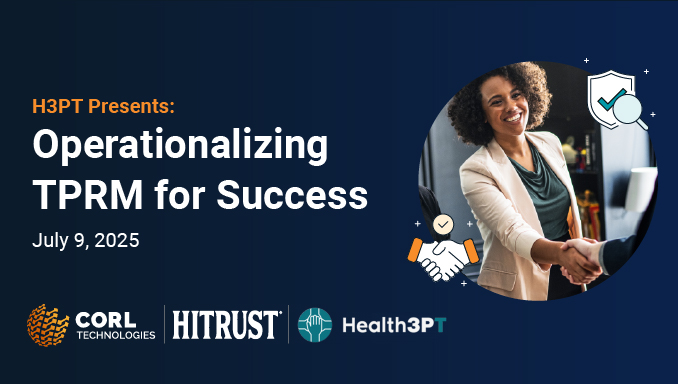
BlogTPRM
Top 10 Healthcare Supplier Risk Management Challenges Facing Providers in 2025
3 Minute Read
Read Top 10 Healthcare Supplier Risk Management Challenges Facing Providers in 2025TPRM
By Jay Stewart | April 16, 2021
Vendors can sometimes be treated less like business partners and more like adversaries for some third-party risk programs. This confrontational approach, however, often leads to breakdowns in communication that can impede the shared business objectives between customers and clients for driving down information security risks for all parties involved.
When communication breaks down, it can result in a host of negative outcomes including increased risk exposure & risk blind spots for the business, delayed assessments, and frustrations on all sides. Such delays can also mean lost revenue due to delays in sales cycles for vendors and increased time & assessment costs for customers.
By contrast, establishing a partnership and high-collaboration model between customers and vendors throughout the security risk assessment process means that everyone wins. Efficient and effective communication yields:
CORL is dedicated to collaboration and open communication with vendors. We have developed some best practices over the years and recommendations for ensuring streamlined communications and partnerships for the assessment process.
You can read more about CORL’s approach to collaboration with vendors in our infographic: CORL is Committed to Partnership & Collaboration with Vendors.
Contact our team here at CORL to learn more about how our managed services and next generation exchange for healthcare vendor risk data improves communication with vendors and gets results in lowering supply chain risks.
 Jay Stewart
Jay Stewart
Chief Revenue Officer
Jay is a dynamic, growth-minded sales leader with more than 10 years of experience in the healthcare information security space. As Vice President of Sales, Jay is responsible for bringing our best-in-class solutions and services for cybersecurity, risk management, and compliance to healthcare payors, providers, and business associates across the country. Jay is a frequent speaker with strong operational experience in vendor risk management programs and deep knowledge of multiple regulatory and compliance frameworks, including HIPAA, HITRUST, ISO, and NIST.
Related Posts

BlogTPRM
By CORL Technologies | August 14, 2025
3 Minute Read
Read Top 10 Healthcare Supplier Risk Management Challenges Facing Providers in 2025BlogCompliance
By CORL Technologies | June 24, 2025
5 Minute Read
Read Unlocking Vendor Assurance: A Deep Dive into CORL Technologies’ Assessment Suite
BlogTPRM
By CORL Technologies | May 19, 2025
2 Minute Read
Read More Than a Checkbox: Why Right-Sizing Vendor Risk Remediation Is the Key to Smarter TPRM
Webinars
WEBINAR H3PT Presents: Operationalizing TPRM for Success Join us for a focused, real-world conversation with healthcare security and risk leaders tackling today’s most pressing TPRM challenges. This session will bring together a small panel of experts for an insightful discussion on how to strengthen third-party risk programs in an evolving threat landscape. This won’t be […]